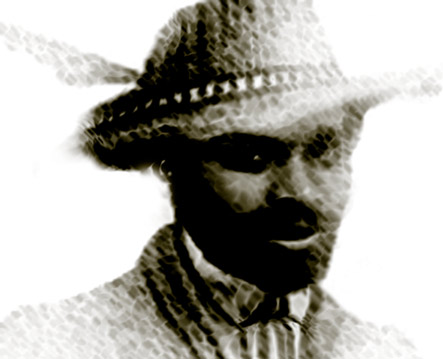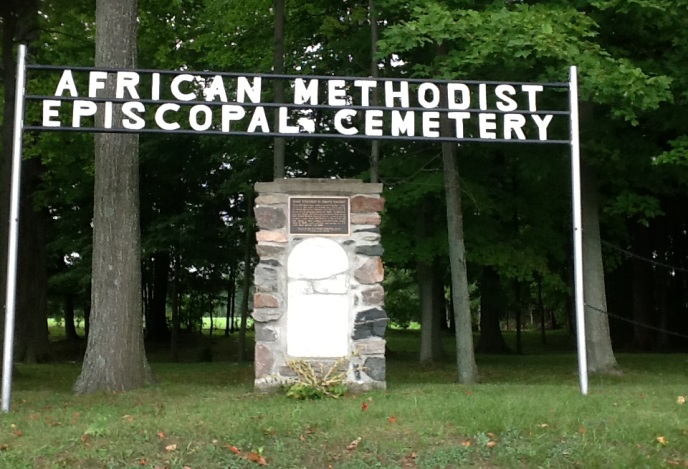Remembering Oxford’s Past | Guest Blogger: Heather A. Rennalls
Since 1995, February has been designated Black History Month in Canada.
The purpose of Black History Month is to educate the public of the many missing pages of history that failed to mention black people, their struggles, triumphs and the contributions they made throughout Canadian history. Black people are woven into the fabric of this country but have been forgotten in books on early history.
The first black person to arrive on Canadian shores over 400 years ago was Mathieu Da Costa. A free black man, he was a pioneer, translator, an interpreter and an explorer. As a member of the expedition party of the French explorers Pierre Dugua and Samuel de Champlain, Da Costa arrived in Canada in 1605. Due to his knowledge of several languages: Dutch, English, French, Portuguese and pidgin Basque, the dialect of many Aboriginals, Da Costa was employed by many explorers. He served as an interpreter between the French and the Micmac Indians, which helped to bridge the gap between these two groups.

Also forgotten in our history books is the mention that slavery existed in Canada from 1628 until 1834 when the British Parliament passed the Emancipation Proclamation on August 1st, still celebrated today as Emancipation Day. (Natasha Henry’s book Emancipation Day Celebrating Freedom in Canada explores the evolution and meaning of Emancipation Day in Canada.) The first known recorded black slave brought to Canada came from Madagascar. Captured in Africa at six years of age, Olivier La Jeune was transported to Quebec in 1628 by Sir David Kirke who owned him. When Kirke left the country in 1629, Olivier was sold several times. Father Paul La Jeune was his last owner. In 1633, he had him baptized Catholic and given the name Olivier Le Jeune. Olivier died on Canadian soil in 1654 at the age of thirty.
Most of the slaves were family servants for wealthy officials or for families living in urban areas. Unlike the large plantations in the United States where a large number of slaves were owned, Canadian households which had slaves tended to have one slave who was a domestic servant, a farm hand or a skilled artisan. A slave usually served the same family during his or her lifetime. The majority of slaves in Canada originated from either the French West Indies or the colonies of British North America. Of the total brought to Canada, about 40% were females and 60% were males. A good read about Canadian slavery and the burning of Old Montreal, is the book by Dr. Afua Cooper The Hanging of Angelique. Also, read about the chronicles of over a hundred slaves, including Harriet Tubman, who escaped bondage in the United States to freedom in Canada via the Underground Railroad in Benjamin Drew’s book The Narratives of Fugitive Slaves.
There were many well-established and thriving black communities throughout Canada and locally, but they have long since disappeared and are almost forgotten. There are few or no monuments to commemorate those long-gone hamlets of early black settlers or to acknowledge them. One reason why history was not recorded is that people did not record their stories, being too busy struggling to survive. Furthermore, stories were not passed on to their children due to the shame associated with the past: slavery. Black History Month is the one time of the year these communities are brought back to life: to be acknowledged and remembered as the thriving settlements they once were. In Oxford County, Black History Month is a time to acknowledge these long-forgotten communities as part of Oxford County’s history.
During the 1800s, many black people made their way to Oxford County. However, not all black people who came here were slaves. Many were free blacks who were trying to eke out a living and many contributed to their communities like Ingersoll, Otterville, Norwich Township and Woodstock. My display, “Almost Forgotten: Black History in Oxford County” consists of numerous articles I have written since 2000, pertaining to the Black History in Oxford County. I also display various Canadian and American books on this subject to inform the public of information that is available. One local book A Safe Haven The Story of the Black Settlers of Oxford County is written by another local Historian Joyce Pettigrew. A video on Oxford County’s Black history was also produced.
I first became intrigued with Black History in Oxford County when a friend took me to the Black Cemetery in Otterville, almost 22 years ago, after moving to Woodstock.

Photo taken by Heather A. Rennalls
I was both surprised and pleased to know that this even existed, which piqued my interest to know more. I was fortunate to meet the now late Mary Evans Smith who told me about the large black population that existed in Ingersoll during the 1800s. In Southwestern Ontario at that time, Ingersoll was second only to Chatham in the size of its black community. Of Ingersoll’s population of some 2,000, about 400 were black.
Please also take a moment to learn more about Oxford County’s Black History by visiting the Ingersoll Cheese & Agricultural Museum , Norwich & District Museum and the African Methodist Episcopal Cemetery. You can also watch a video on Oxford’s history called The Last Stop.
Heather A. Rennalls A local Historian and a Freelance Writer and Photographer
About the Author:

Heather Rennalls is a local historian with a passion for the rich history of Oxford County. She is well recognized in Oxford County for her work and is a regular speaker and advocate to raise awareness of Black history in Oxford County. She is a frequent speaker and is well known for her exhibit, ‘Almost Forgotten: Black History in Oxford County.” Heather is a community connector, freelance writer and researcher of local history, businesses, organizations and groups, sharing her work through the blog, Heather’s Historicals.
Sites on Black Canadian History:
Ontario Black History Society
Historica Canada
Canadian Museum of History
HARRIOTT TUBMAN St. Catharines Ontario CANADA
Historica Canada
Active History.ca History Matters
Black History Month: Hero’s of the Underground Railroad
